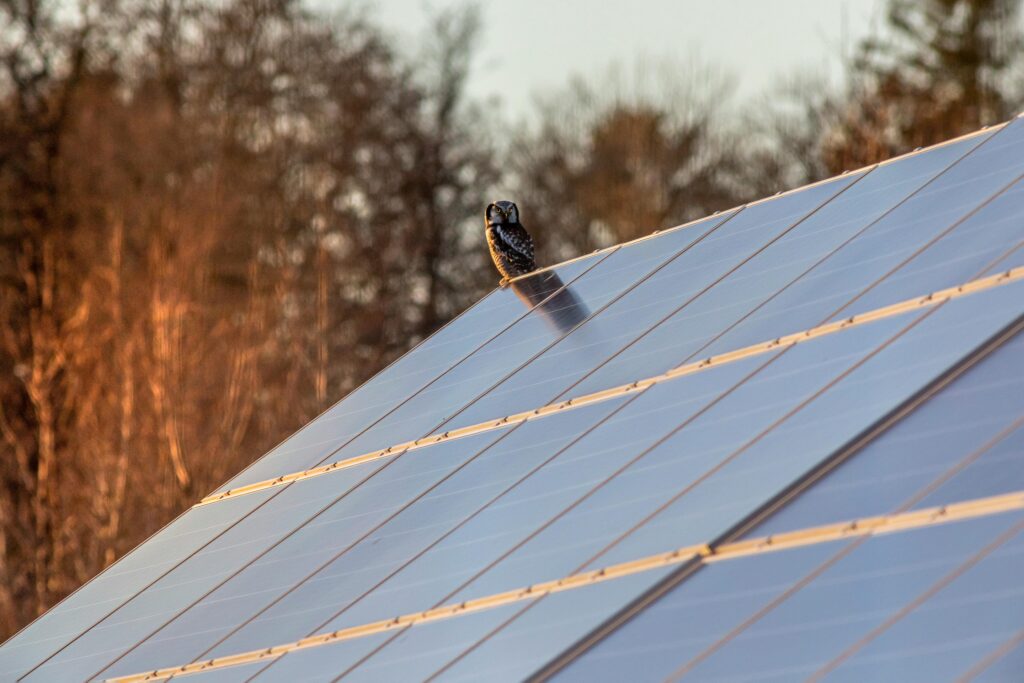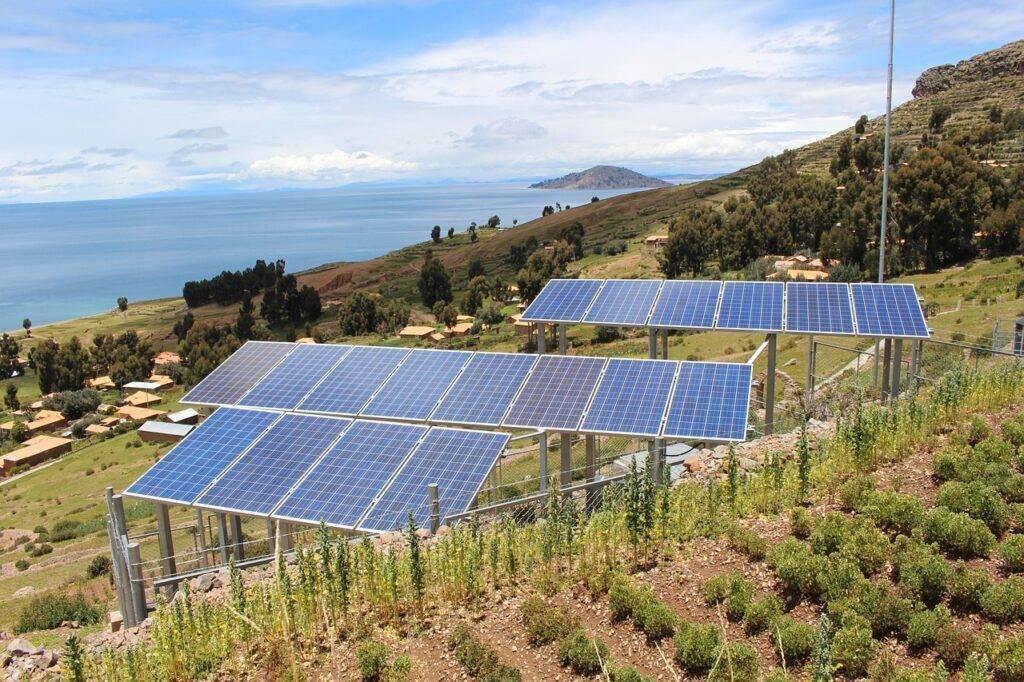Uncover the origin of the first solar panels, their impact, pros & cons in 2025, costs, efficiency, and why modern solar panels are vital for a cleaner future.
First Solar Panels
Introduction
Solar energy is one of the most promising renewable resources of our time, but it all began with a modest invention: the first solar panel. These early breakthroughs in photovoltaic (PV) technology laid the foundation for the energy revolution we are experiencing today. Understanding the journey from the first solar panel to the sophisticated systems we have now reveals the immense progress in clean energy.
The Inventor of the First Solar Panel
The first solar panels was introduced by Bell Laboratories in 1954. Developed by scientists Daryl Chapin, Calvin Fuller, and Gerald Pearson, the first silicon photovoltaic cell could convert sunlight into electricity efficiently enough to power small devices.
Quick Facts
| Detail | Information |
|---|---|
| Year Invented | 1954 |
| Inventors | Daryl Chapin, Calvin Fuller, Gerald Pearson |
| Type | Silicon-based PV Cell |
| Efficiency | Approx. 6% |
Earlier in 1839, French physicist Alexandre-Edmond Becquerel discovered the photovoltaic effect — the scientific basis for solar power.
Evolution and Milestones
Although revolutionary, early solar panels were incredibly costly — about $300 per watt — which limited their application to niche industries like aerospace.
Key Milestones
| Year | Event |
|---|---|
| 1839 | Discovery of photovoltaic effect by Becquerel |
| 1954 | First practical solar panel developed by Bell Labs |
| 1958 | Vanguard I satellite powered by solar cells |
| 1970s | Oil crisis spurred interest in solar energy |
| 1980s | Emergence of government incentives for solar adoption |
| 2000s | Widespread adoption of rooftop solar panels |
| 2020s | Advanced bifacial and perovskite solar technologies emerge |

Why the First Solar Panels Mattered
The introduction of solar panels was significant for several reasons:
- Proof of Concept: Demonstrated that sunlight could be converted into usable electricity.
- Energy Independence: Laid the groundwork for reducing dependency on fossil fuels.
- Environmental Impact: Introduced a zero-emission energy alternative.
- Technological Momentum: Sparked decades of innovation in PV systems.
- Foundation for Space Technology: Enabled long-term, sustainable satellite operations.
- Catalyst for Green Jobs: Spurred a new economic sector focused on clean tech and sustainability.
Then vs. Now: Solar Technology Comparison
| Feature | First Solar Panel (1954) | Modern Solar Panels (2025) |
|---|---|---|
| Efficiency | ~6% | 20%–25% |
| Cost per Watt | $300 | <$0.30 |
| Lifespan | Limited | 25–30 years |
| Main Use | Satellites, gadgets | Homes, businesses, solar farms |
| Warranty | None | 25+ years |
| Panel Type | Single-junction silicon | Mono, Poly, Thin-film, Perovskite |
Today’s market leaders such as First Solar, SunPower, and Trina Solar offer advanced panels with high efficiency, durability, and affordability.
Applications of Early Solar Panels
The first solar panels powered:
- Radios and toys (experimental phase)
- Space technology — like Vanguard I, the first satellite to use solar power
- Remote weather stations and communication towers
These early applications proved solar panels could operate in extreme environments, making them ideal for future terrestrial use.
Visit Website: First Solar Panels
Click here >>> https://www.firstsolar.com/
Current Global Solar Energy Statistics
| Metric | Value (2024) |
|---|---|
| Global Installed Solar Capacity | 1,200 GW+ |
| Average Residential Cost (USA) | $2.75 per watt |
| Average Payback Period | 6–9 years |
| % of World Electricity from Solar | ~5% |
| Jobs in Solar Industry (Globally) | 4.3 million |
| CO2 Saved per kW Installed | ~1,500 kg/year |
First Solar Panels: Should We Use Them in 2025?
As we assess the viability of early solar panel models in 2025, let’s weigh the advantages and disadvantages, explore where solar panels are most effective, and analyze current cost and efficiency trends.
Merits of Using First Solar Panels
- Environmental Benefit: Zero-emission electricity source
- Reduced Electricity Bills: Savings of up to 70% annually
- Energy Independence: No reliance on the grid
- Incentives & Tax Credits: Up to 30% federal tax credit in the USA
- Property Value Boost: Homes with solar panels sell for more
- Reliable Energy: Paired with batteries, ensures 24/7 availability
Demerits of Early First Solar Panels
- Low Efficiency: ~6%, compared to modern 20–25%
- High Cost per Watt: ~$300 vs <$0.30 today
- Durability: Limited lifespan and structural fragility
- Obsolete Design: Incompatible with current inverter systems
Where Are Solar Panels Most Popular in 2025?
| Country | Installed Capacity (GW) |
|---|---|
| China | 430+ |
| USA | 170+ |
| India | 85+ |
| Japan | 75+ |
| Germany | 60+ |
Modern Efficiency and Cost Comparison
| Metric | First Solar Panels | 2025 Panels |
|---|---|---|
| Efficiency | 6% | 20–25% |
| Cost (per watt) | $300 | <$0.30 |
| Lifespan | ~5 years | 25–30 years |
| Annual Output (per kW) | ~600 kWh | 1,200–1,500 kWh |
Final Verdict
While the first solar panels were a technological marvel of their time, they are not practical for modern use in 2025. Today’s solar panels are significantly more efficient, durable, and cost-effective. However, understanding their origin helps appreciate how far the solar industry has come—and highlights the necessity to invest in clean energy.
Future of Solar Technology
Solar technology is rapidly evolving. Some of the most promising future developments include:
- Perovskite Solar Cells: Offering high efficiency with low-cost manufacturing.
- Solar Paint: A potential innovation allowing any surface to generate power.
- Floating Solar Farms: Large-scale installations on lakes and reservoirs.
- Transparent Solar Panels: Useful for windows and mobile devices.
- Battery Integration: Seamless pairing with lithium-ion and solid-state batteries for 24/7 solar usage.
Conclusion: A Legacy of Innovation
From a humble start in a Bell Labs lab to powering millions of homes today, the journey of solar panels showcases how innovation can shape a sustainable world. The first solar panel wasn’t just a product — it was a turning point in energy history.
If you want to explore more information related solar panels. Click Below:
Click Here >>> https://usasolarguider.com/

